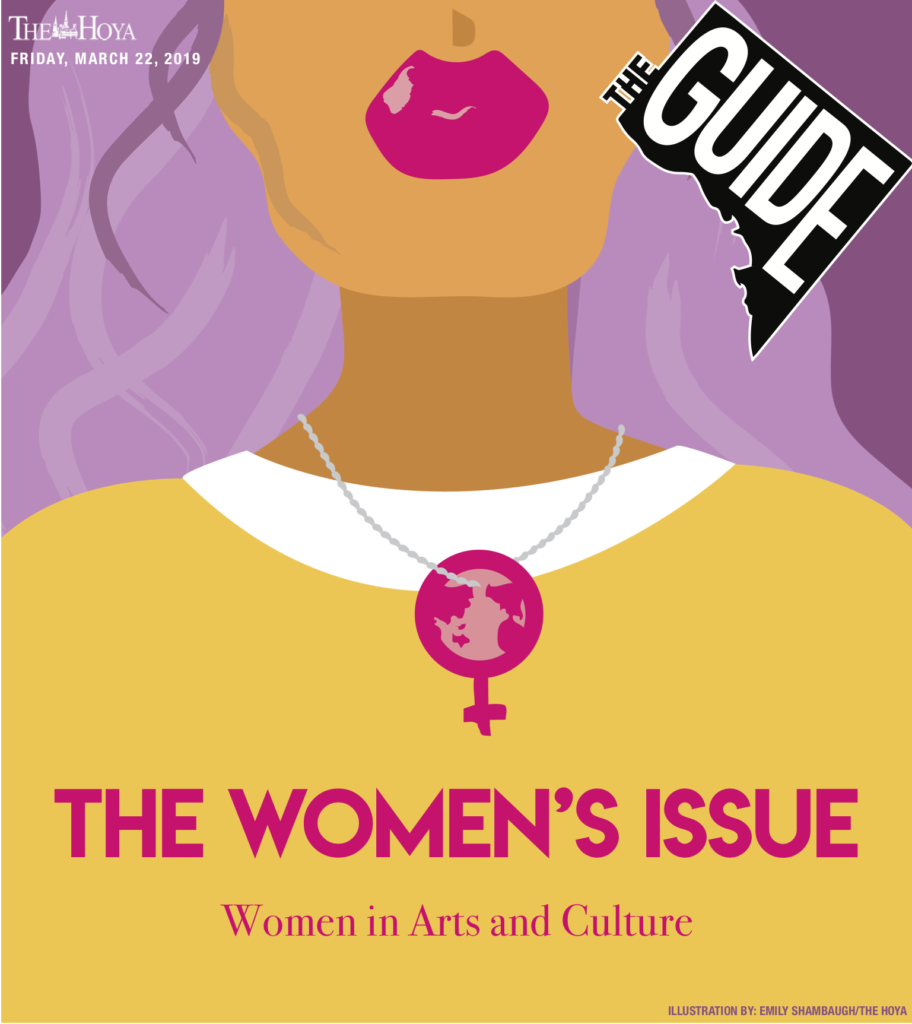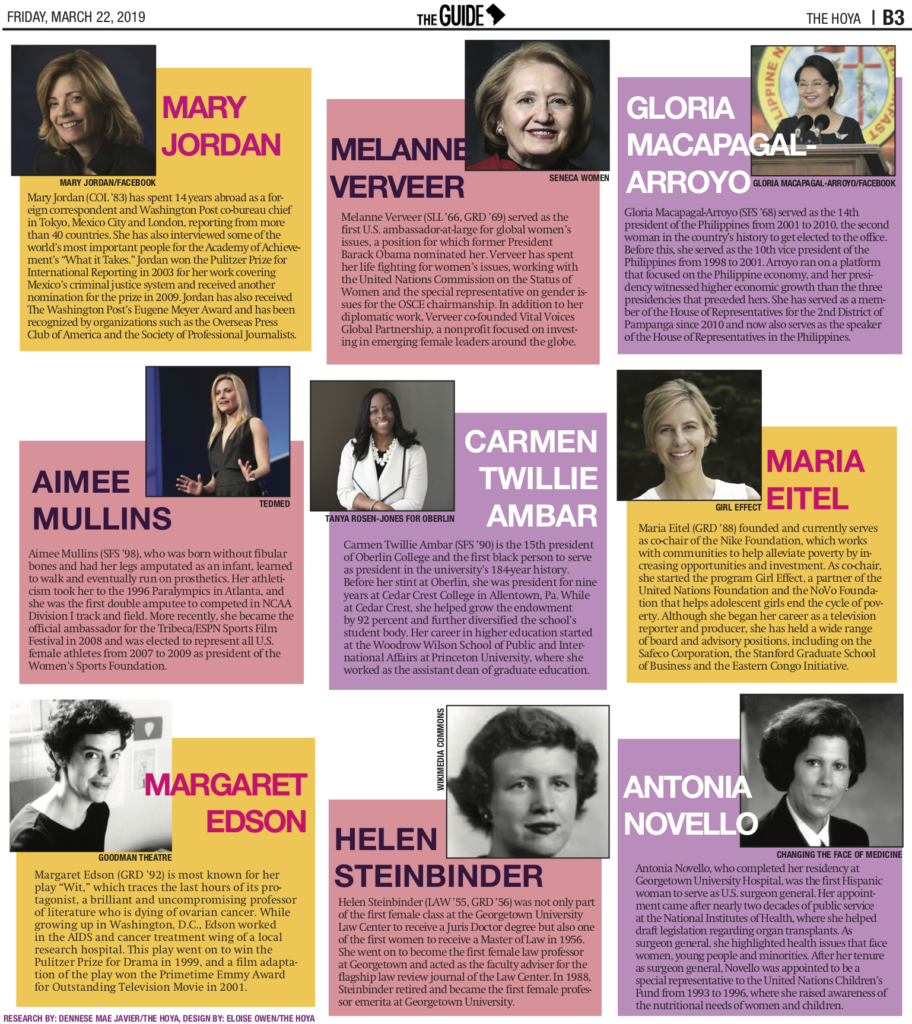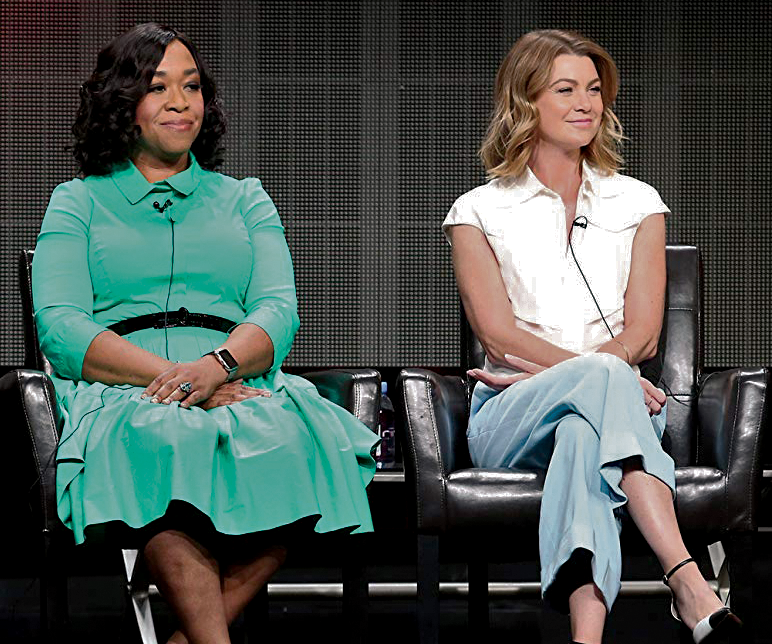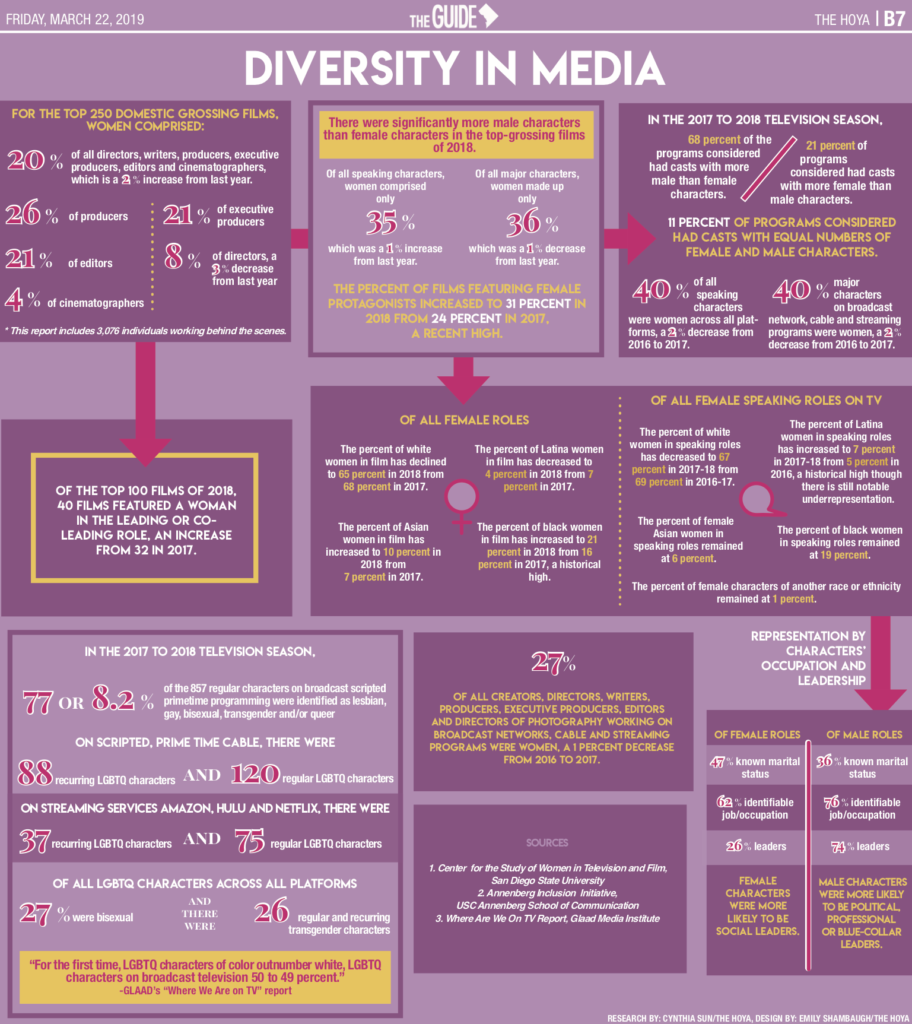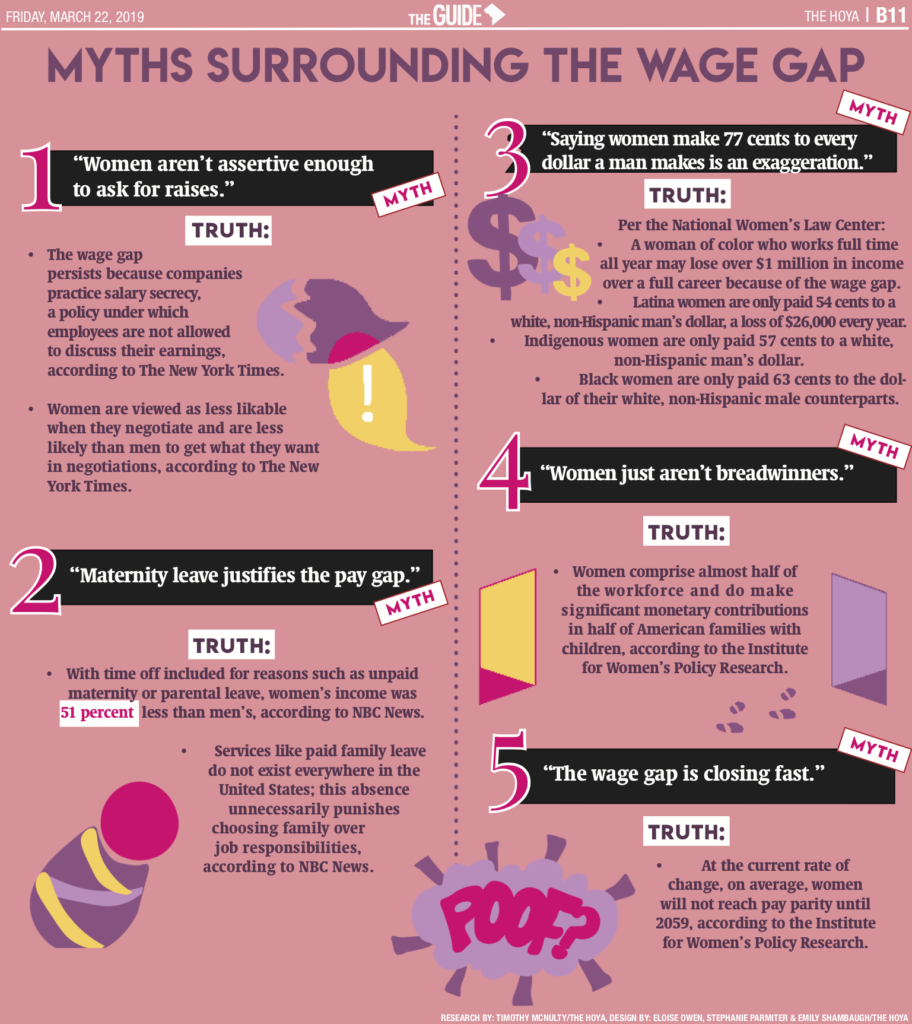“Tradition crumbles: College admits girls,” read The Hoya’s front page in September 1968. The headline reflected the campus climate toward Georgetown’s decision to fully become a coed campus across all four schools in 1969.
Fifty years later, Georgetown’s campus is now bustling with female students, faculty and staff, but the storied journey to this environment still includes much work as we recognize women’s legacy on campus during Women’s History Month.
A Recent History
When Georgetown opened in 1789, the university, like all higher education institutions at the time, was an all-male school. Centuries later, Georgetown became a fully coed school, but women did have a history at Georgetown before then.
The first official enrollment of any woman at Georgetown was in 1880, when Jeanette Sumner and Annie Rice registered for the School of Medicine, according to university archival material. However, both women left after only one year, according to the alumni association.
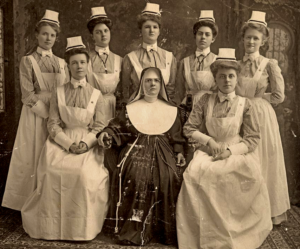
The next expansion of admission to women on campus came with the opening of the School of Nursing in 1903, according to university archival material. The new school had seven applicants, all of whom were women. Upon their graduation in 1906, they were the first women to receive degrees from Georgetown. The nursing school remained an all-female school even after the acceptance of women into the College in 1969.
In 1919, the School of Foreign Service was founded with the plan to have an inaugural class of 150 students — 25 of them women. These women were considered “special students” and were not regularly enrolled students. However, their status changed in 1943, when World War II led enrollment to drop among male students and the university needed additional tuition. Consequently, female students were regularly enrolled to help keep the university financially afloat.
Though the transition to coeducation had already begun, Georgetown was still regarded as a male institution, so when a woman was hired to operate the Georgetown switchboard in 1938, people were shocked.
“One of Washington’s last citadels of masculinity — Georgetown University — crumbled yesterday,” a headline of The Washington Times, a local paper that closed in 1939, read in June of that year.
The postwar period marked an influx of women in the SFS and the Institute of Language and Linguistics. The government needed more civilian employees with foreign language skills, and Georgetown’s women were filling those spots, according to the SFS website. During the 1950s, women were finally allowed to enroll in the Law School and broke ground by becoming editors on the Georgetown Law Review, according to university archival materials.
By 1952, women were enrolled in every Georgetown undergraduate school except the College. Of the 5,000 students on the Hilltop, 8 percent were women. In 1953, the Graduate School of Arts and Sciences admitted women for the first time, according to university archival material. The 11 female graduate students, referred to as “women pioneers” were admitted “experimentally,” according to a December 1953 archived article in The Hoya.
Large inequalities still existed on campus, though, as male and female student guide books from the 1960s like “Miss ‘G’ Goes to Georgetown” had concerning policies toward women, according to Leslie Miller and Sarah Poulson in “Going Coed: Women’s Experiences in Formerly Men’s Colleges and Universities.”
“Personal pride is an inherent quality of the weaker sex and while clothing plays an important part in the college co-eds plans for college, it is well to remember that the ‘price’ wardrobe is not always wardrobe that is appropriate and best suited for co-eds,” Miller-Bernal and Poulson wrote from the guidebook.
The Transition
In the spring of 1968, Academic Vice President Thomas Fitzgerald presented to Georgetown’s board of directors the idea of accepting women into the College. Once again, financial necessity was a main consideration in accepting women to offset increasing institutional costs, according to a 1995 report by Poulson.
After the board of directors, faculty and male student population showed no major objections, the board voted unanimously to accept women into the incoming College freshman class in 1969, Poulson wrote.
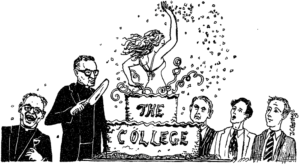
A May 1968 cartoon entitled “Surprise!” in The Hoya showed a woman in a dress popping out of a cake, surrounded by men in suits showing different faces of amusement, shock and disapproval.
In a May 1968 letter to the editor published in The Hoya, Bernard Picchi (SFS ’71) said the admission of women would to the university was a threat to the quality of the university.
Women “precipitate a degeneration of academic morale, class attendance, and professional hostility,” Picchi wrote. “NO! Keep women out of the College! Is nothing sacred?”
Picchi, who has been on the library board for 35 years and was formerly on the board of governors, submitted the letter as satire to comment on the attitude that he was seeing among his fellow classmates.
“I meant the letter as a spoof on the attitudes of TRULY crusty upperclassmen at Georgetown,” Picchi wrote in a March 20 email to The Hoya.
The admittance of women to the College was so significant because of the prominence of the College at Georgetown, according to Poulson’s 1995 report.
“The College formed the core of undergraduate education, the very identity of the University, and enrolled the majority of Georgetown’s undergraduate students,” Poulson wrote.
The Board of Directors received over 500 female applicants and decided to admit 50 women, according to university archive material.
Bernadette Tramm, known as Bernadette Savard when she attended Georgetown, was a member of the first fully integrated class of men and women on the Hilltop. Despite being in the first class, she did not feel out of place, according to an interview with The Hoya.
“Coming in as a freshman, you didn’t know that it hadn’t been that way, so you came in and you were just happy to be here. As a freshman with other freshmen in these spaces, it didn’t seem strange to [have] men and women together. So from that perspective, I never felt that we were out of place or treated unfairly or differently,” Tramm said in an interview with The Hoya.
After women were permitted to enroll in the College, their inclusion on campus became more solidified through enrollment numbers, leadership positions and available coursework. 50 percent of the student body was female by 1976, and Deborah Candy became the first female student body president the following year. The women’s studies program became available as a major in 1990, and Dorothy Brown became the university’s first female provost just nine years later.
Where we are now
In 2017, 56 percent of students enrolled at Georgetown were female, according to U.S. News and World Report, and many institutional changes have occurred to recognize the role of women on campus today.
The Women’s Center, which started in a closet in the Leavey Center in 1990, now has its own office located in Leavey 327. GUWC, which serves as a resource for women’s needs on campus, hosts events every year for Women’s History Month. This year, they have programmed a screening of “On The Basis of Sex,” a talk on sexual health, a trivia night, and the Brave and Own It Summits, among other events in collaboration with a number of partners.
Every March, the Georgetown University Women’s Alliance, a group that facilitates conversations and professional growth for women at Georgetown, joins the rest of the country in celebrating Women’s History Month. GWA puts on a host of events and programs to honor the women of Georgetown. These events consist of speakers and conversations that focus on what it is like to be a woman in 2019, especially on the Hilltop.
GWA’s Women on the Walls exhibit opened March 14 in Hoya Court. The exhibit, curated by GWA fellow C.C. Borzilleri (COL ’19), seeks to highlight the mark that women students, faculty and administrators have left on Georgetown’s legacy.
Artrice Valentine Bader (GRD ’66), the first person to be awarded a Ph.D. in biology at Georgetown, spoke at the opening of the exhibit, along with Tramm and Brown, reflecting on their experiences as women pioneers on the Hilltop.
For months, students have pushed for the women’s and gender studies program to become a department. Gaining departmental status would allow for additional resources and funding to the WGST program, expanding its reach on Georgetown’s campus. This recognition would also allow for professors of the program to be eligible for tenure track, which would give them higher salaries and more job security and open the possibility for student research.
Bonnie Morris had to leave her position in the women’s and gender studies program in 2017 after 21 years because her work was not compensated enough for her to be able to afford to live in Washington, D.C.
“The moral dilemma is that in the underfunded area of women’s studies, I teach the history of equal pay for equal work, while not receiving it myself,” Morris wrote in an op-ed to The Hoya. “By continuing to accept a pay rate that is not on par with those who teach less and publish less, I can no longer call myself a good feminist role model to the young women who constitute the majority of Georgetown undergraduates. As an underpaid adjunct in an underfunded program, I can no longer sit idly by.”
While women continue to make their presence at and contribution to Georgetown known, many obstacles still need to be overcome. Women still do not have equal representation in faculty and administrative positions and represent only a third Georgetown’s board of directors. Tramm concedes, though, that Georgetown has made much progress since that first class.
“It appears to me that we’ve moved beyond whether the women are here or equal rights and more into are they empowered or not, and really more defining who we want all people to be, all students here to be,” Tramm said.













